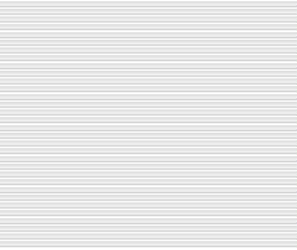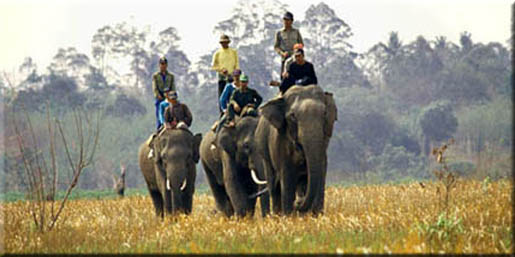









TOUR
AMAZING DESTINATION

INFORMATION

SUPPORT ONLINE

UTAKA Building 3rd Floor # 303 Jl. Utan Kayu Raya 87 Jakarta Timur , INDONESIA
Tel : +62-21-85904991
Fax :+ 62-21- 85904990
E-mail : info@fokusindonesiatours.com

ACEH
At the northwestern end of Sumatra, was the first province of Indonesia to have significant contact with the outside world. Chinese chronicles of the sixth century speak of a kingdom called Po-Li on the northern tip of what is now Sumatra. 9th century Arabic and Indian writings mention Aceh as an important trade centre. The first Islamic Kingdom in Indonesia was established in 804 in Aceh, and the region's position as an Islamic stronghold grew as the city became a centre for Islamic learning and the gateway for Indonesians making the pilgrimage to Mecca.
Aceh's decline began with the death of Sultan Iskandar Thani in 1641, when the British and the Dutch began to battle for control of the region. The London Treaty of 1824 gave the Dutch control of all British possessions in Sumatra, in return for their withdrawal from India and Singapore.
The Acehnese are famous throughout Indonesia for their courage and fierce sense of Independence, and the Dutch lost over 10,000 men during the Aceh Wars, which lasted from 1873 to 1942. Although industrialization and global communications have created a greater openness to western ideas and practices, visitors should keep in mind that the Acehnese take their religion, their manners and their morals very seriously. Aceh after Tsunami Disaster.
NORTH SUMATERA
Indonesia's most populous province outside of java, stretches from the Indian Ocean in the west to the Straits of Malaka in the East, and from Aceh in the north to west Sumatra in the south. It is thick with virgin rainforest, jungle-covered hills, terraced rice field, mountain rivers, beautiful waterfalls, volcanic lakes and peaceful white beaches.The people of the region can be divided into five main ethnic groups : the Coastal Malays, Living along the Malacca Straits, the Bataks, consisting of the sub-tribes around Lake Toba and Samosir Island, the Pesisirs along the Indian Ocean coast, the Mandailing of Southern Tapanuli, and Nias Islanders off the western coast of the province. These groups each have their own dialects, religious beliefs, arts, customs and cultures. Several ethnic groups live in Medan and other towns of North Sumatra, the largest of these being Chinese and Indian. Other parts of the archipelago are represented, notably the Acehnese, Minangkabau and Javanese.The diversity of arts and cultures make this region a treasure chest for social scientists and culture seekers. Ancient carved-stone graves of Batak kings, the megalithic culture of Nias, unique dances, ceremonies, arts and crafts are just waiting for you to discover.
North Sumatra is also one of the richest provinces in Indonesia for flora and fauna. And of course the jewel of North Sumatra, Lake Toba, the legendary birthplace of the mountain-dwelling Bataks and the largest island lake in Southeast Asia. The region also produces more than 30% of Indonesia's export commodities, making it a vital cog in the Indonesian economy. Tobacco, palm oil, tea and rubber are produced in large quantities, particularly around Medan in the north of the province.
WEST SUMATERA
West Sumatra is composed of three regions: volcanic highlands, a long coastal plain and a series of jungle-covered islands just offshore. Much of the province is still wilderness; virgin jungle inhabited by elephants, leopards and rhinos. It is the traditional homeland of the Minangkabau, who are known far and wide through the archipelago for their shrewd business sense, their fiery-hot dishes and ancient matriarchal customs. The women own property and the men leave home to seek their fame and fortune. Travelling is considered a mark of success and West Sumatrans and their Minang or Padang restaurants are found in all major towns across the nation. The people are hospitable and eloquent, with a poetic style of speech. West Sumatran days are filled with colourful ceremonies and festivals. Legend has it the Minangkabau are descendants of the youngest son of Alexander the Great, King Maharajo Dirajo. West Sumatra's centre of culture and tourism is Bukittinggi, nestled in the highlands north of the provincial capital of Padding. Surrounded by high mountains, picturesque valleys and lakes, Bukittinggi is considered by many tourists to be the most hospitable city in all Sumatra. Padang Tabing Airport is the main gateway to West Sumatra and serviced by local airlines. The MV. Kerens sails every two weeks for Jakarta from Teluk Bayur harbor. Smaller vessels from Muara harbor sail to small towns along the entire west coast of Sumatra. Regular bus services run between Padang Bukittinggi and other major cities of Sumatra, as well as via trans-Sumatra Highway to Jakarta.
RIAU
The 3,000 islands of the Riau province straddle the Straits of Malacca, one of the oldest and busiest trading routes in the world. For centuries the islands have provided a safe haven to traders and sailors from Europe, India and China, retaining today the flavour of an ancient 'crossroads of the world". The romantic history of this region is rich with tales of piracy and international conflict. Riau, which includes a large part of East Sumatra, is homeland to the Malays and the source of Indonesia's Malay-based national language. The first book of Malay grammar, called Bustanul Katibin, was written and published here in 1857. Since its founding in 1402 by Parameswara, the Kingdom of Malacca played a leading role in the history of the area. With the arrival of the Portuguese a period of wars for control of the Straits began. The situation was aggravated by the arrival of the Dutch and British in the early 17th century.A turbulent conflict followed, which was partially resolved by the Treaty of London in 1824, giving the Dutch control of all European territories south of Singapore. This area included Riau, and effectively severed its links with Johor and the mainland.
SOUTH SUMATERA
One of the greatest kingdoms in Indonesian history, the Buddhist Empire of Sriwijaya, prospered along the banks of the Musi River in South Sumatra over a thousand years ago. Located on the southern-most rim of the South China Sea, close to one of the world's busiest shipping lanes linking the Far East with Europe, the region's historical background is rich and colorful. The Sriwijaya kingdom practiced a bustling and lucrative trade with ancient China during its era of powerful dynasties. In 672 the Chinese-scholar, I Tsing, recorded that a thousand monks and scholars could be seen translating and studying Sanskrit in what is now the regional capital of Palembang. Few relics of this memorable era remain. Stretching from the foothills of the mighty Bukit Barisan mountain range in West Sumatra to the islands of Bangka and Belitung in the East, the province of South Sumatra is relatively flat but very fertile, with numerous rivers cutting across the landscape and meandering their way to the sea. Coffee and tea plantations are scattered across the province, but the area's enormous wealth comes from oil, natural gas, coal, tin and quartz reserves. Palembang is still the gateway to the province with one of the region's three major airports. The other two are on Bangka and Belitung islands. All three provide direct connections with Medan, Batam, Padang and Jakarta. Air-conditioned buses from points north and west of Palembang are also regularly available, as well as from major cities in Java and Bali.
LAMPUNG
Ancient Chinese travel chronicles refer to a place in the most southerly part of Sumatra called "Lampung" or "Place of the southerly winds". Megalithic sculptures discovered in Kebontebu, Kenali, Pugung and Batubedil also help to date the province to Indonesia's greatest maritime empire, Sriwijaya. Strategically located looking towards Krakatau and Java across the Sunda Strait, Lampung has a long history of trade and is still an important gateway into Sumatra, particularly from Jakarta.
The Province is generally flat with the highest mountains of Gunung pesagi, Tanggamas, Seminiung, Sekincau and Raya all being dormant volcanoes. Pundar Lampung, the Provincial capital, was formerly two separate towns, Tanjungkarang and the port of Teluk Betung, which after the infamous eruption of Krakatau were both completely covered in volcanic ash. In the course of development, however, these towns have merged together to become one single city. Being blessed with incredibly fertile soil, agriculture has naturally become the main industry of the province. Clove, coffee, cassava, cocoa and rice are preferred in the eastern sections of the regions. The area around Lake Ranu is primarily a tobacco growing area.
The Way Kambas Nature Reserve in the west of the province is a perfect place to see Sumatran elephants being trained to work in thick tropical jungles as well as hundreds of species of exotic birds. Tigers still roam this land although they are rare. The largest flower in the world, Rafflesia, can be seen at the Bukit Barisan Selatan National park.
BENGKULU
Bengkulu's history is been a difficult one, filled with changing colonial rulers, internal Sumatran wars, disease and exploitation of the indigenous peoples. It was the site of Sir Stamford Raffles first entry into Indonesia and there are still remains of British influence in the area. The primary crops of the area are pepper, coffee, nutmeg and sugar cane. Bengkulu Provinces is easily accessible by land, air and sea transportation. You can catch regular buses direct from Medan, Padang or Jakarta. Flights arrive three times a day. Domestic ships from Jakarta, Padang and Medan stop over in Baai harbor, Bengkulu

Transfer & Excursion | Hotels & Resort | Package Tour | Adventure | Promotion | Flights | Events | Related Links | Amazing Destination
Fokus Indonesia Tours
UTAKA Building 3rd Floor 303 Jl. Utan Kayu Raya 87 Jakarta Timur , INDONESIA
Tel : +62-21-85904991 | +62-21-85904991 Fax :+ 62-21- 85904990
E-mail : info@fokusindonesiatours.com
Copyrightę2011 FokusIndonesiaTours. All rights reserved
Development by Cianjur Webmaster


















